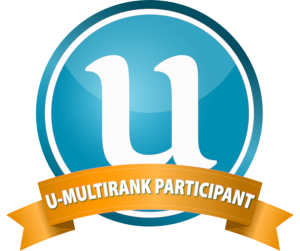Basics of Sport Biomechanics (LSPA_052)
About Study Course
Objective
The purpose of the study course is to provide students with competence regarding human health, the importance of physical activity and sport in promoting and strengthening health:
- structure and functions of the human musculoskeletal system, mechanical and biological foundations of movement, motion kinematics, dynamics and energy,
- biomechanical aspects of improving physical characteristics and movement control.
Learning outcomes
1.In the study course, students obtain knowledge about:
1. Structure and functions of the biomechanical systems
2. Human motor activity as a physical and biological process
3. Motor activity as a system of movements, systemic-structural approach in movement analysis
4. Classical mechanics adapted for the analysis human motion
5. Biomechanical aspects of the process of forming and controlling motor activity
6. Didactic principles for learning motor activities
7. Biomechanical techniques for evaluating the level of mastering motor activities
8. Mechanical properties of biological tissues and materials
9. Biomechanical models of muscles, biodynamics of muscle contraction
10. Mechanical conditions for muscle activity
11. Methods for the acquisition and analysis of biomechanical parameters of motion
12. Kinematics, dynamics and energy of human movements
13. Methods for assessing and improving person’s physical characteristics
14. Causes of injuries and prevention measures in sports training
15. Individual and group characteristics of technical skills in sport
16. Posture assessment methods and prevention measures
17. Mechanics and biomechanics of locomotion, movement
18. Dependence of human motor skills on body composition indicators
19. Role of anatomical and physiological maturation in the ontogenesis of human motor skills.
1.20. To perform mechanical and biomechanical analysis of human movements, physical exercises
21. To choose physical exercises to improve human fitness or health, justify this choice
22. To justify the conditions doing physical exercises depending on age, gender, physical fitness
23. To evaluate the effects of physical exercises on the human body and its functions, the muscle system
24. To choose physical exercises and justify this choice for developing the strength characteristics of different muscle groups
25. To assess the probability of injuries after physical exercises, explain the causes of injuries and prevention measures
26. To assess the level of physical fitness of a person, justify the peculiarities of using physical exercises for people of different ages, gender and level of training
27. To assess human posture, take measures to improve static and dynamic posture
28. To assess human balancing capacity, take measures to improve balance.
1.29. To understand and explain mechanical and biological processes in living systems
30. To perform mechanical and biomechanical analysis of movements
31. To determine the impact of physical exercises on the musculoskeletal system
32. Knowing the mechanical and biomechanical properties of biological materials and tissues is able to assess the probability of injuries after physical exercises
33. To justify biomechanical conditions for the selection and performance of physical exercises considering the age, gender and physical fitness of the person
34. To evaluate muscle contraction regimes when performing various physical exercises
35. To explain and discuss movement control issues, assess age of human movement, individualise the choice of physical exercises
36. Knowing the general principles of human motor skills is able to coordinate the choice of physical exercises with critical periods of development of motor skills
37. To justify the choice of physical exercises and performance conditions for improving strength, speed, endurance and other physical characteristics
38. To link the theory learned to practice of motion analysis, physical improvement and prevention of health disorders in people
39. To analytically assess and discuss matters related to human age, gender, health, physical fitness and movement execution techniques based on knowledge of sports biomechanics
40. To use the theory and skills acquired to address professional issues related to sport.
Study course planning
| Study programme | Study semester | Program level | Study course category | Lecturers | Schedule |
|---|---|---|---|---|---|
| Sports science | 4 | Bachelor | Required | Jānis Lanka |
| Study programme | Study semester | Program level | Study course category | Lecturers | Schedule |
|---|---|---|---|---|---|
| Sports science | 3 | Bachelor | Required | Jānis Lanka |



